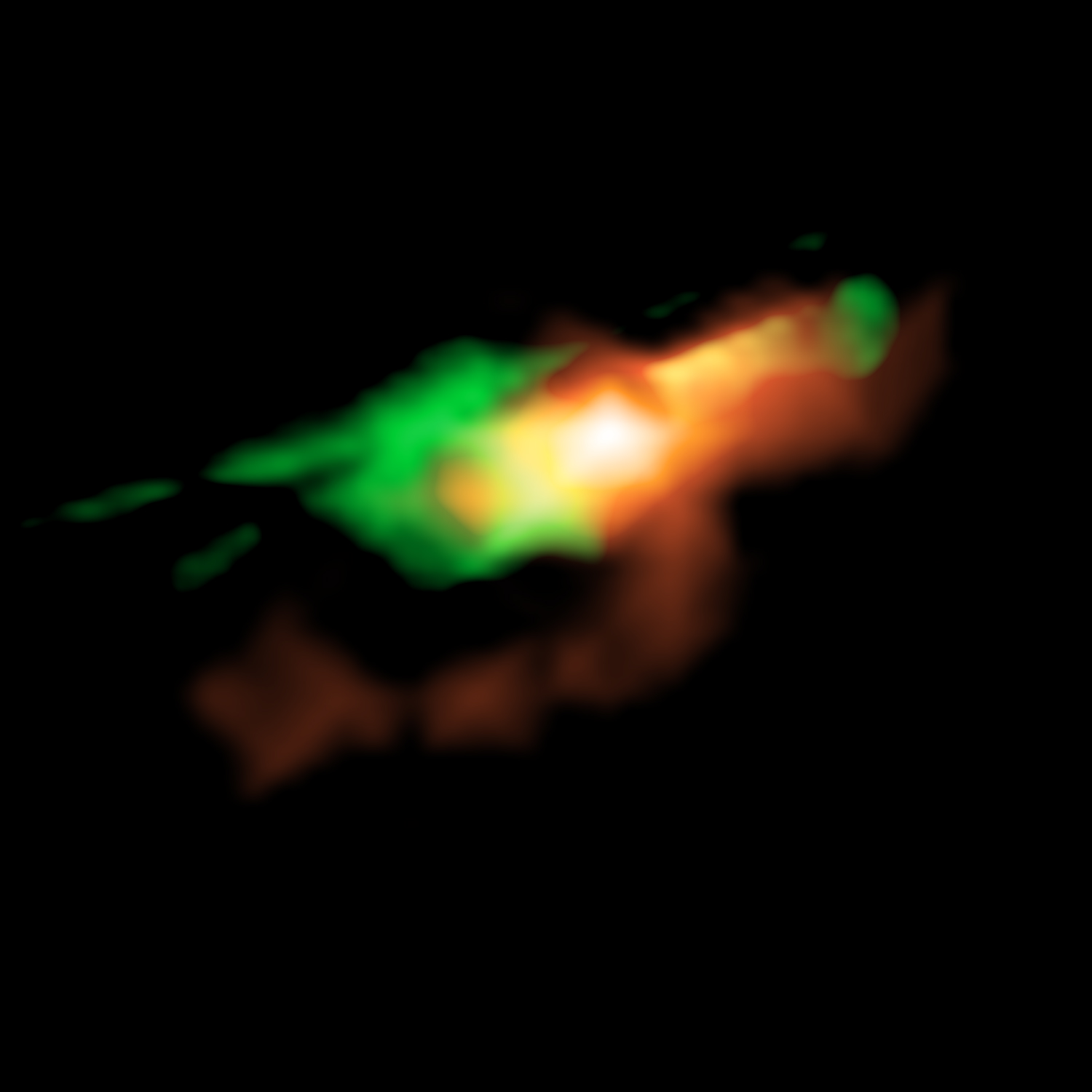Astronomers peered across 11 billion light years and used another galaxy as a telescope to observe energetic jets fueled by a supermassive black hole in the early universe.
The effort has produced the first high-resolution images of disrupted galactic gas clouds at such an extreme distance from Earth, according to a recent study published in The Astrophysical Journal Letters, and a trippy quadrupling effect in the image due to gravitational distortion from the galaxy-telescope.
The new images provide an “excellent opportunity” for investigating rarely-observed interactions between radiant jets and interstellar gas in a far-flung galaxy, said the authors, led by Kindai University cosmologist Kaiki Taro Inoue.
Supermassive black holes lurk at the centers of large galaxies, including our own Milky Way. Occasionally, big clumps of matter fall into these black holes, triggering the release of powerful plasma jets that transform galactic centers into ultra-luminous objects called active galactic nuclei (AGN). Quasars are the most radiant AGNs ever observed, and they are among the brightest phenomena in the universe.
For decades, scientists have been fascinated by a distant quasar called MG J0414+0534, which is located 11.1 billion light years from Earth. Despite this immense distance, the quasar is observable thanks to a phenomenon known as gravitational lensing.
Lensing occurs when massive objects magnify background events from our perspective on Earth. In this case, the gravitational field of a galaxy located between the quasar and Earth has amplified light from MG J0414+0534. Not only does the quasar appear much closer because of the effect, its image is split into four identical images by the distortion of the foreground galaxy.
Inoue and his colleagues observed this quasar for four nights in November 2017 using the Atacama Large Millimeter/submillimeter Array (ALMA) in Chile. The combination of the highly sensitive radio telescope and the lensing galaxy enabled the team to parse fine details about the effects of the jets on interstellar gas within the quasar.

The team captured emissions from interstellar water vapor and carbon monoxide gas that were generated by the irradiation of these molecules by the high-energy plasma jets. “The observed features show clear evidence of strong interaction between the jets and interstellar medium (ISM),” the team said in the study.
“High temperature and high-density environments in the ISM of the quasar host galaxy, as suggested from CO line ratios, also support this result,” they added.
Though the jets are highly luminous, they also appeared to be fairly small, suggesting that this quasar, as we see it now, has only been active for tens of thousands of years. This makes it a valuable example of “the early stage of quasar radio activity,” according to the study, which is a process that is rarely observed, especially at such immense distances.
“MG J0414+0534 is an excellent example because of the youth of the jets,” said Inoue in a statement. “We found telltale evidence of significant interaction between jets and gaseous clouds even in the very early evolutionary phase of jets.”
“I think that our discovery will pave the way for a better understanding of the evolutionary process of galaxies in the early Universe,” he concluded.
from VICE https://ift.tt/2UQzWcZ
via cheap web hosting
No comments:
Post a Comment